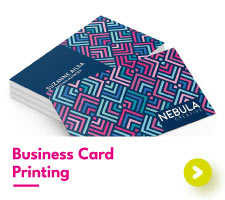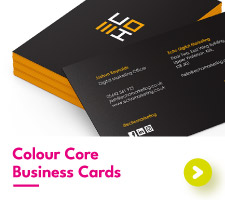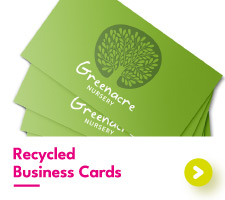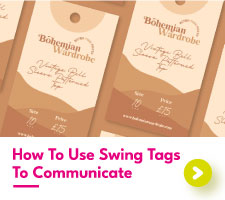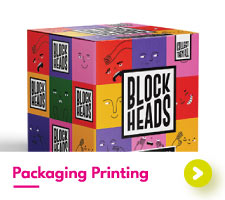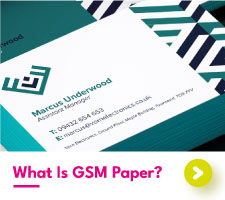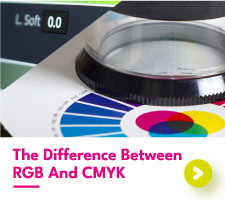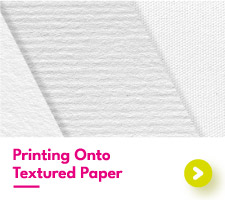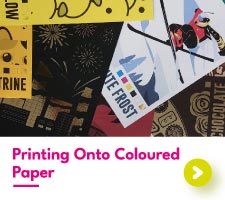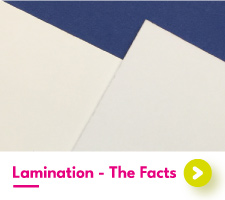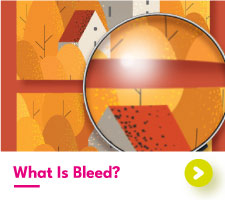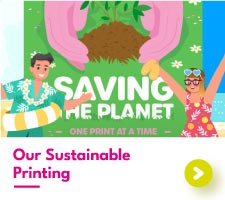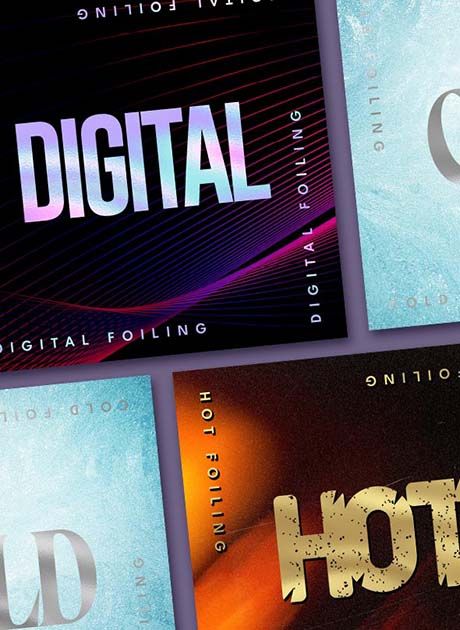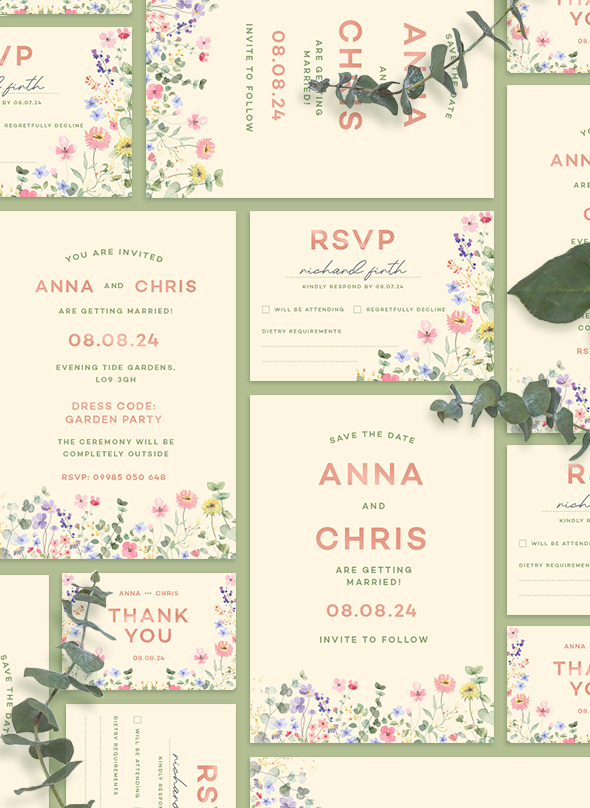From Ancient Art to Modern Luxury: A Brief History of Metallic Foil Printing
The history of metallic foil printing is a fascinating journey that spans centuries, from its ancient origins to its current status as a modern luxury. This article will explore the evolution of metallic foil printing, from its humble beginnings in ancient times to its current popularity in 2024.
The Ancient Origins of Metallic Foil Printing
The inception of metallic foil printing is deeply rooted in the annals of history, tracing back to when civilisations of yore employed precious metals to embellish manuscripts and artefacts. This age-old craft was not merely about adornment but also served as a testament to the skill and meticulous attention to detail of the artisans involved. In these ancient times, gold and silver, owing to their lustrous sheen and rarity, were favoured for their aesthetic appeal and symbolic significance, particularly for special announcements.
Artisans painstakingly applied thin layers of these metals, often beaten into fine sheets, onto surfaces, creating intricate patterns and motifs that reflected the cultural and spiritual beliefs of their era. Such decorations were not only a display of craftsmanship but also conferred a sense of reverence and value upon the objects they adorned.
This practice was prevalent across various ancient cultures, each adapting the technique to their unique artistic traditions. From the gilded sarcophagi of Egypt to the illuminated texts of Byzantium, metallic foil printing was a craft that transcended geographical boundaries, evolving over centuries yet retaining its essence of creating beauty through the application of metal.
The significance of metallic foil printing in ancient times cannot be overstated. It was a harmonious blend of art and alchemy, a method through which the ethereal was brought into the tangible, imbuing everyday objects with a touch of the divine. Through these early endeavours, the foundation was laid for the myriad developments that would propel metallic foil printing into the realm of modern luxury, shaping its path through history.
The Renaissance: A Golden Era for Gold Leaf
The Renaissance period marked a significant epoch in the evolution of metallic foil printing, epitomised by the extensive use of gold leaf to adorn illuminated manuscripts and lavish decorations. This era, renowned for its rebirth of art and culture, witnessed the fusion of traditional techniques with innovative approaches, significantly enhancing the aesthetic and value of artworks and texts. Gold leaf, with its incomparable shimmer and luxurious appeal, became a favourite amongst the elite, symbolising not only opulence but also the pursuit of beauty and knowledge characteristic of the time.
Artisans of the Renaissance refined the application of gold leaf, employing meticulous techniques that allowed for greater precision and variety in designs. This period saw the introduction of complex embellishments and the embellishment of personal artefacts, religious texts, and architectural features, showcasing the skill and creativity of craftsmen. The technique of applying gold leaf involved a delicate process of hammering gold into thin sheets, which were then carefully applied to the prepared surface using gilding adhesive. The result was a strikingly vibrant decoration that caught the light and the eye, imbuing objects with a sense of divinity and immortality.
Moreover, the Renaissance's emphasis on humanism and the revival of classical learning led to the increased production of texts and artworks that were accessible to a wider audience. The decoration of these items with gold leaf not only enhanced their aesthetic appeal but also their cultural and intellectual value, reflecting the era's profound appreciation for art, knowledge, and beauty. The advancements and artistic achievements of the Renaissance in metallic foil printing laid the groundwork for future innovations, contributing significantly to the craft's enduring legacy.
Industrial Revolution: The Mechanisation of Beauty
The Industrial Revolution heralded an era of unprecedented change, transforming myriad aspects of society, including the realm of metallic foil printing. As factories rose and manufacturing processes were overhauled, the production and application of metallic foils underwent a remarkable evolution. This period saw the birth of mechanised techniques that streamlined the once laborious and artisan-driven process of foil application, making it far more efficient and widely accessible.
With the advent of steam-powered machinery and later, electrification, the capability to mass-produce embellished items became a reality. This mechanisation introduced a democratisation of luxury, enabling a broader swathe of the population to access goods that were previously available only to the affluent. For the first time, metallic foils could be applied on a scale that was unimaginable in earlier centuries, extending their use beyond the confines of elite art and into the commercial sphere. The textiles, packaging, and publishing industries benefited from these innovations, incorporating metallic foils into their products to add a touch of elegance and to capture consumer attention.
Moreover, the advancements during the Industrial Revolution laid the foundational technologies that would later be refined in the 20th century, including hot stamping processes. These mechanical innovations not only propelled the aesthetic qualities of metallic foil printing forward but also significantly reduced production costs, facilitating the expansion of the market for foil-embellished goods. The era's contributions to the craft of metallic foil printing underscored a pivotal shift towards industrialisation, marking a significant chapter in its historical journey from an artisanal practice to a mechanised art form.
The 20th Century and Hot Stamping Technology
The advent of hot stamping technology in the 20th century marked a significant milestone in the progression of metallic foil printing, ushering in an era of innovation and accessibility. This method, which employs a combination of heat and pressure, facilitated the transfer of metallic foil onto various substrates, producing finishes that were not only visually striking but also remarkably enduring. The introduction of this technology represented a major leap forward from traditional hand-gilding techniques, enabling faster production times and a level of precision previously unattainable.
The application of hot stamping extended beyond the realms of luxury goods and into the wider consumer market. Its adoption across industries such as packaging, publishing, and advertising underscored its versatility and appeal. Brands harnessed the allure of metallic finishes to captivate customers, lending a sense of sophistication and quality to their products. Moreover, the technology's ability to accommodate intricate designs and a spectrum of foil colours opened new avenues for creative expression.
Hot stamping's impact was profound, setting the stage for the next phases of innovation in foil printing. It paved the way for the development of more advanced and environmentally friendly foil application techniques. The efficiency and aesthetic appeal of hot stamping remains influential, reflecting its enduring legacy in the journey of metallic foil printing from an art form reserved for the elite to a key element of mainstream design and branding.
The Digital Age: Modern Innovations in Foil Printing
The emergence of digital technology has significantly transformed the landscape of metallic foil printing, introducing a suite of innovations that have elevated this traditional craft into a modern marvel. Contemporary digital foil printing techniques now enable precision in applications that were once thought unachievable, allowing for the creation of detailed and complex designs with ease. The versatility offered by these advancements means that designers and brands can experiment with an unprecedented range of effects, from subtle gradients to striking holographic and multi-coloured finishes.
One of the hallmarks of this new era is the ability to produce short runs economically, making it feasible for even small-scale operations to access high-quality metallic printing. This shift has democratised the use of metallic foils, enabling bespoke and limited-edition projects to thrive. Furthermore, digital foil printing does not require the creation of dies or specialised tooling, reducing setup times and costs, and allowing for rapid prototyping and iteration.
The digital domain has also fostered a collaborative interface between technology and creativity. Graphic designers can now directly translate their digital artworks into foil-printed pieces without the need for intermediate steps, ensuring fidelity to the original vision. Additionally, the integration of digital processes has streamlined production, enhancing efficiency and environmental sustainability by minimising waste.
This digital revolution is not merely about technical capabilities but also about opening new avenues for artistic expression and innovation in foil printing, bridging the gap between traditional craftsmanship and the limitless potential of modern technology.
Sustainability: A New Chapter for Metallic Foil Printing
The imperative for environmental stewardship has ushered in innovative strides within the realm of metallic foil printing. In the face of escalating environmental concerns, the industry has pivoted towards the development of eco-conscious materials, championing the introduction of foils that are not only recyclable but also biodegradable. These advancements mark a significant departure from traditional practices, reflecting a broader shift towards sustainable manufacturing processes.
The inception of such materials caters to the burgeoning consumer demand for products that minimise ecological footprints. Businesses, now more than ever, are aligning their packaging strategies with sustainable practices, recognising the pivotal role they play in conservation efforts. This transition to eco-friendly foils is emblematic of the industry's commitment to marrying aesthetic appeal with environmental responsibility.
Moreover, these sustainable options do not compromise on quality or visual allure. The latest innovations ensure that the luxurious sheen and tactile richness, hallmarks of metallic foil printing, are retained, thereby offering brands the opportunity to embrace sustainability without sacrificing the premium feel that attracts consumers. This harmonisation of environmental considerations with the intrinsic value of luxury packaging is redefining industry standards.
As the landscape of consumer preferences continues to evolve, the integration of green practices in foil printing is not merely a trend but a fundamental shift. It signifies a forward-thinking approach, where ecological mindfulness and innovation coalesce to chart a sustainable future for the industry.
The Role of Metallic Foil Printing in Branding and Consumer Preference
In an era where standing out is paramount, metallic foil printing emerges as a pivotal tool for brands aiming to make an indelible mark in the minds of consumers. This printing technique, renowned for its capacity to impart a sense of luxury and sophistication, is particularly effective in sectors where the visual appeal of products can significantly influence purchasing decisions. By incorporating metallic elements into packaging, companies can elevate their product presentation, thus enhancing the perceived value and desirability of their offerings.
The allure of metallic foil printing lies not just in its aesthetic appeal but also in its ability to engage the tactile senses, offering a multi-sensory experience that can differentiate a brand on crowded shelves. Such distinctive packaging becomes a silent ambassador for the brand, subtly communicating quality and attention to detail.
Furthermore, the adaptability of metallic foil printing, enabled by digital technologies, allows for unparalleled customisation and personalisation. Brands can now tailor their packaging to reflect seasonal campaigns, limited editions, or even individual customer preferences, creating a deeper connection with their target audience.
In essence, the application of metallic foil printing in branding is a strategic choice that can significantly sway consumer preferences. Its utility extends beyond mere decoration; it is an effective communication tool that tells a story of elegance and exclusivity, resonating with consumers seeking premium experiences in their everyday purchases.
The Future of Metallic Foil Printing
As we gaze into the horizon, metallic foil printing is poised to continue its evolution, driven by a relentless pursuit of innovation and a growing consciousness of environmental considerations. The future will see further integration of cutting-edge digital technologies, which promise to unleash even more creative potential and flexibility in design. This will not only enable brands to produce more captivating and unique packaging solutions but also streamline production processes, reducing waste and energy consumption. Moreover, the increasing demand for sustainable practices is expected to spur the development of new, eco-friendly foil materials.
These materials will likely offer improved recyclability and biodegradability without compromising the quality and allure that metallic foils are renowned for. As consumer expectations evolve, the capacity of metallic foil printing to adapt and innovate will ensure its continued relevance and appeal in the world of branding and product presentation. The journey ahead for metallic foil printing is bright, with endless possibilities waiting to be explored, solidifying its place as a cornerstone of modern luxury and environmental stewardship.
To take a look at our foiling, order a foil sample pack today.

 USA
USA FR
FR
